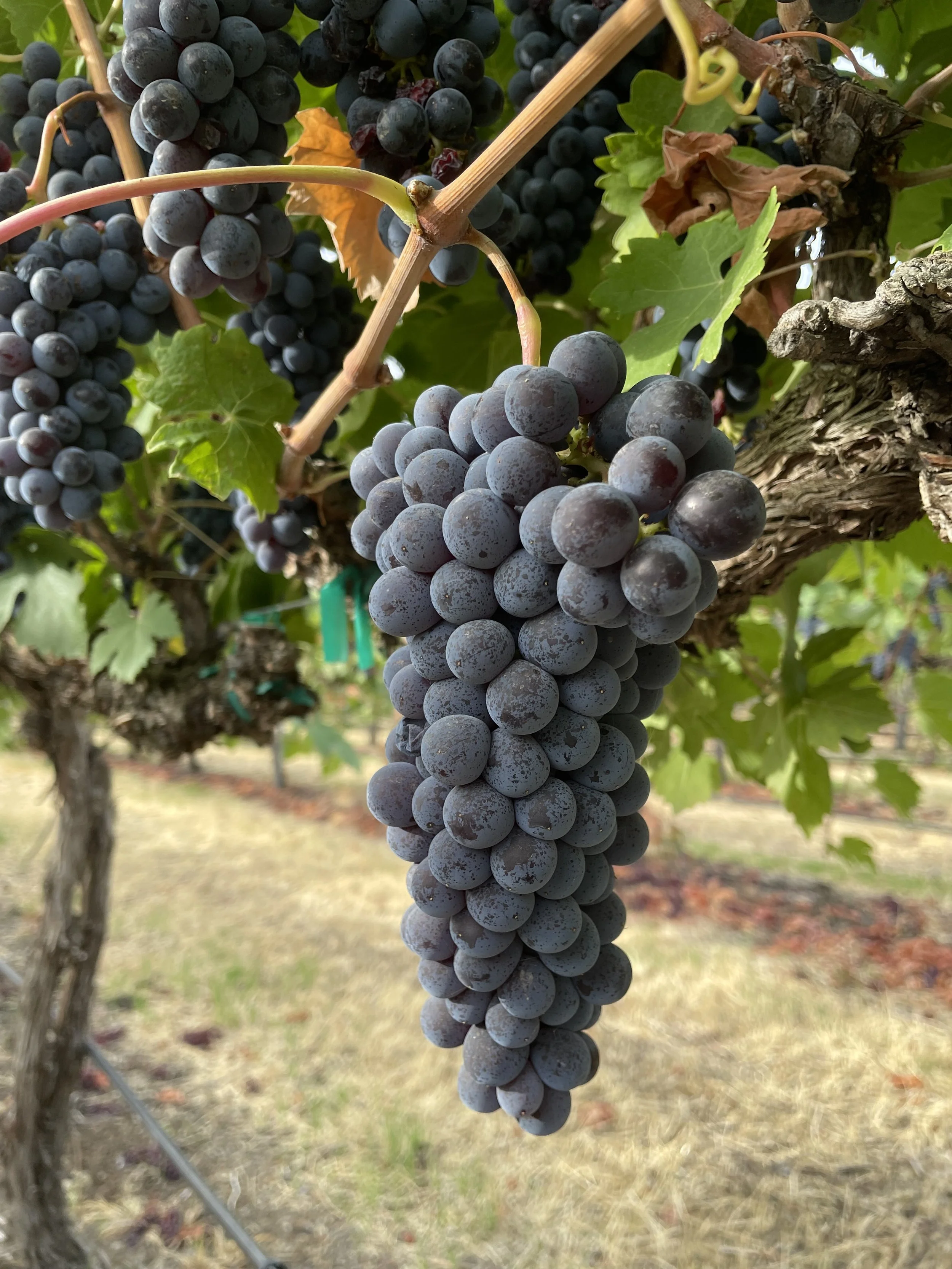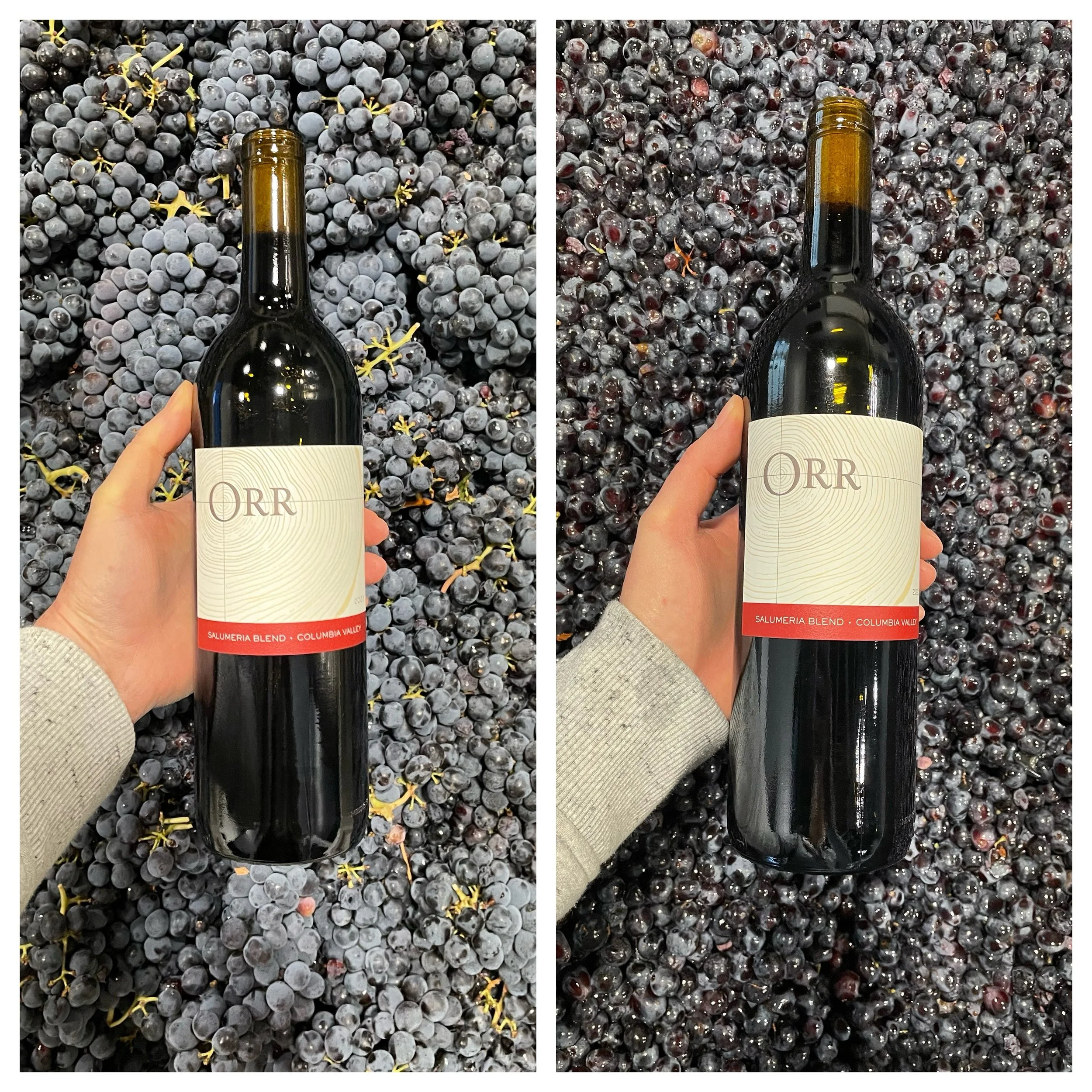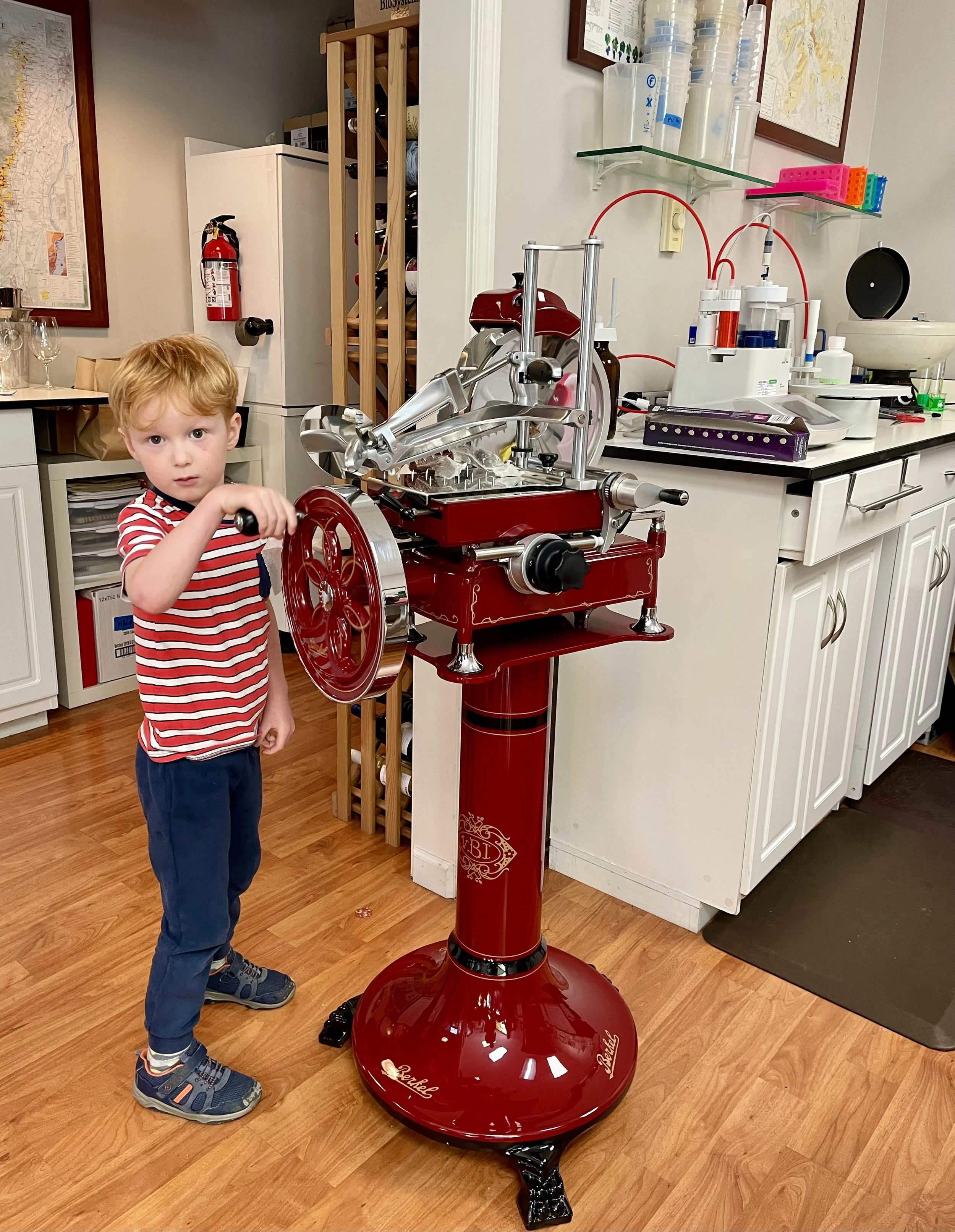How It's Made: Orr Salumeria Red Blend
How It’s Made: Orr Salumeria Red Blend
We are pressing the Sangiovese component of my 2025 Salumeria blend today, so I thought it’d be a good time to share how it’s made.
My Salumeria blend is a red wine inspired by the salami, prosciutto and cured meats of the world. It’s a blend of Sangiovese, Cabernet Sauvignon and Merlot from Washington state’s Columbia Valley.
The story begins in October of 2023, a client walked into my lab to drop off a sample for analysis. I asked if this sample was the last fruit he was bringing in for the year and he said no, there’s one more lot coming, some unexpectedly available Sangiovese that he couldn’t pass up. OK I love Sangio, I drink a ton of Italian Sangioveses and blends (great values) and I’d been analyzing this particular vineyard block for a different lab client for years. I knew the quality of the wines this planting can produce.
Curious, I asked if he thought I could get some of this extra Sangiovese fruit for my brand. He put me in touch with Washington state’s favorite husband and wife team Dick and Luanne Boushey of Boushey vineyards who agreed to sell me 1.29 tons of Sangiovese Grosso from “Glen’s block” planted in 1992 in Grandview, WA. Their crew hand-picked it on October 18, 2023.
Glen’s block Sangiovese Grosso at Boushey Vineyard on October 2, 2025
We processed this Sangiovese fruit like my Grenache - totally destemmed, gently punched down and pressed off before harsh astringency could be extracted. The young wine was racked into neutral French oak barrels for aging. We blended these Sangio barrels with some barrels of Stillwater Creek Cab clone 191 that I was also offered on a whim. I used Stillwater Creek Merlot for topping wine. The blend of the 2023 Salumeria is 48% Cabernet Sauvignon, 44% Sangiovese with 8% Merlot.
Pre and Post Destemming Boushey Sangiovese on October 7, 2025
Sangiovese
Jancis Robinson describes Sangiovese's main viticultural characteristics as being variable, similar to Pinot Noir in its sensitivity to place and that Sangiovese ripens relatively late. For me, it is the last fruit picked for my brand each year.
According to Ian d’Agata in his book Native Wine Grapes of Italy, Sangiovese has the highest number of clones registered with the Italian National Registry. Most of it is grown in central Italy in the areas of Tuscany, Umbria and Romagna. There are two main “biotypes”, Sangiovese Grosso and Sangiovese Piccolo.
There are a lot of names for the Italian wines made from Sangiovese besides Chianti Classico - Brunello di Montalcino, Rosso di Montalcino, Nielluccio di Sardinia, Vino Nobile di Montepulciano, Rosso di Montepulciano, Prugnolo Gentile, Montefalco Rosso, Morellino di Scansano and probably way more I don’t know about.
There is a tradition of blending Sangio together with French varietals like Cabernet Sauvignon, Merlot and even Cab Franc and Syrah. The most famous Super Tuscan blend is Tignanello which Antinori started producing in 1971.
I age my blend in all “experienced” French oak barrels for 9 months before bottling so, mine is very different from the super-expensive and collectable Super Tuscans which tend to be aged in new French oak barrels for 20+ months.
A few years ago, my parents shipped me a real surprise - a Berkel meat slicer. A very generous gift that lives in my lab and I use it to slice prosciutto and salami for lab lunch and charcuterie happy hour. “Salumeria” is the Italian word for deli, the shop where cured meats are sliced and sold.
I pronounce it sah-loo-meh-REE-ah.
2023 Orr Wines ‘Salumeria’ Red Wine- The really good 2023 ‘Salumeria’ combines Cabernet Sauvignon (48%) with Sangiovese (44%) and a small portion of Merlot. It is bright and juicy with refined tannins and serious acidity on the palate. Loads of pretty red fruits parade with Satsuma orange zest and hints of white pepper on the palate, alongside damp soil accents.
Drink 2025-2033- 93 points Owen Bargreen



